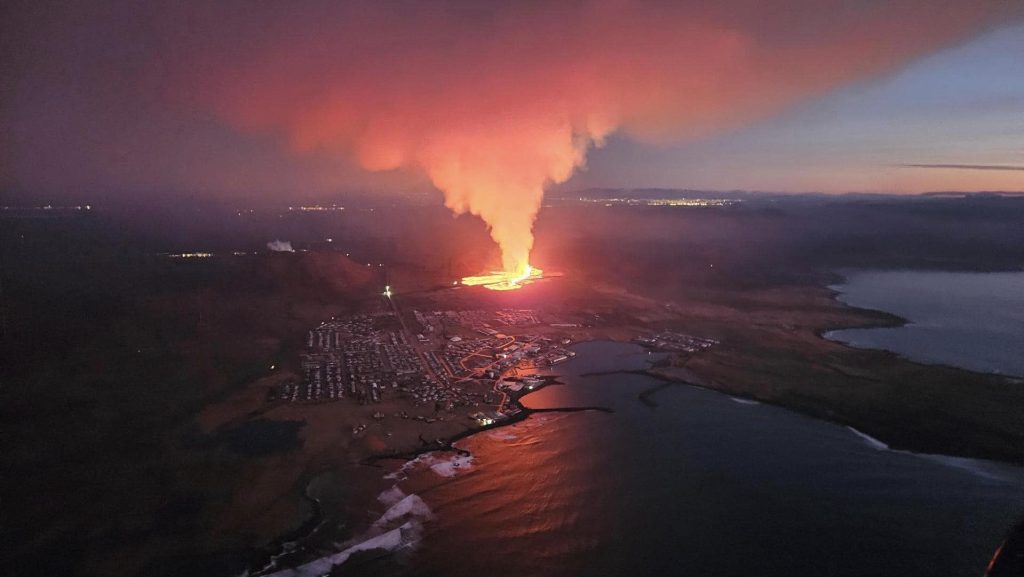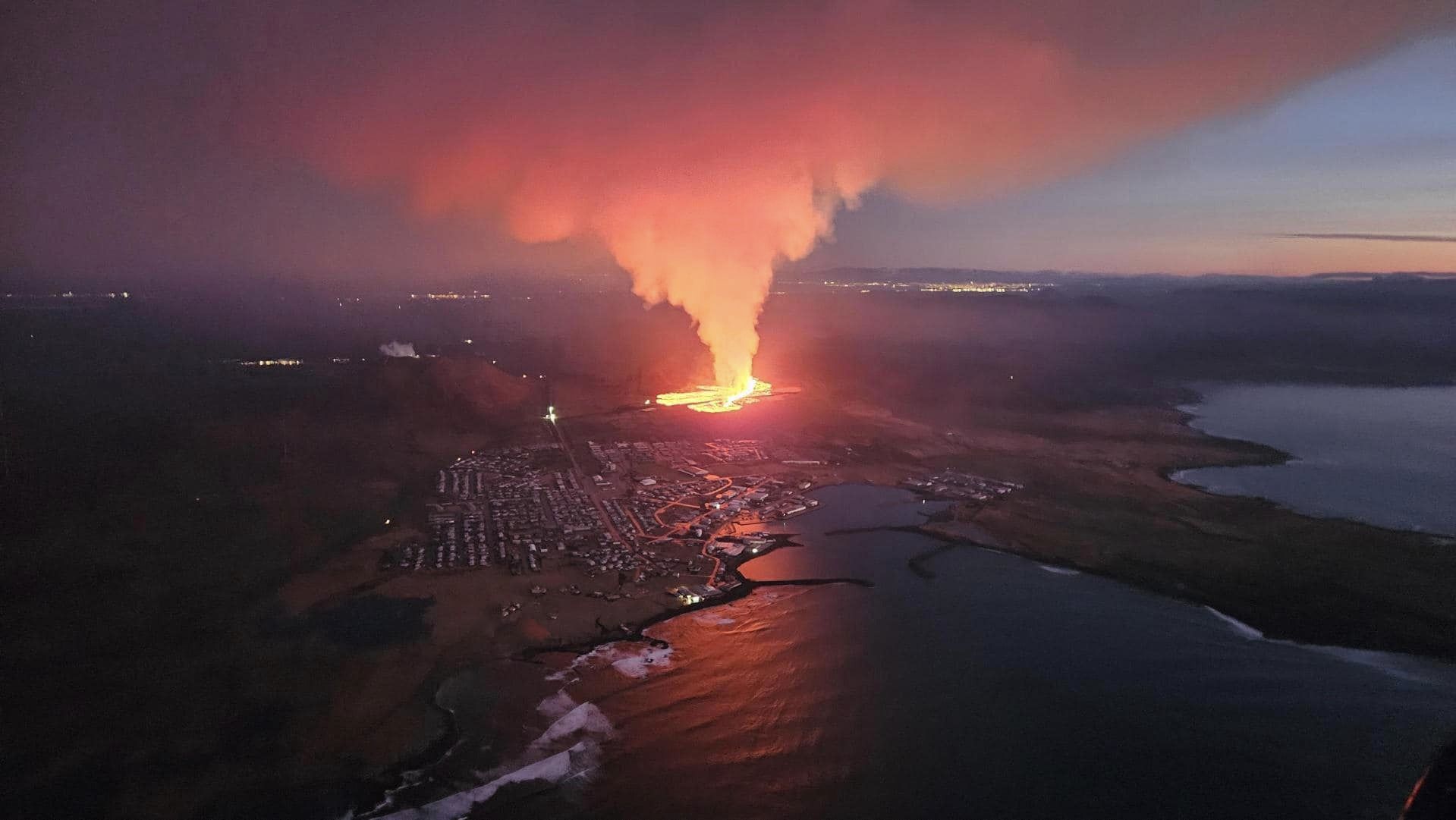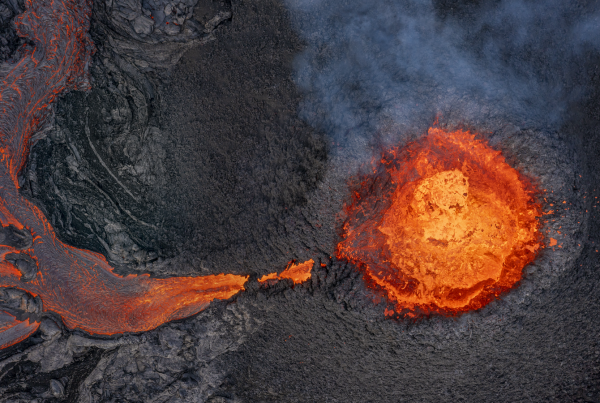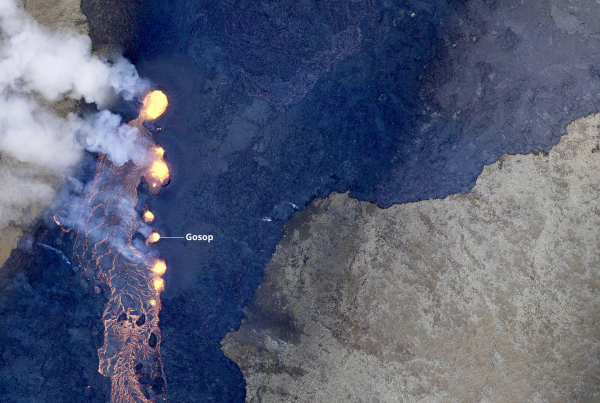
The eruption just outside of Grindavík
Understanding Iceland’s Seismic Vigilance
January 15, 2024
The volcanic landscape of Iceland continues to evolve with the recent eruption near Grindavík on the Reykjanes Peninsula. Following increased seismic activities since October 2023 and a previous eruption in December, the area experienced renewed volcanic activity starting January 14, 2024.
Recent Developments of the eruption
As of January 15, there are indications that the lava flow from the Grindavík eruption may be subsiding. According to the latest reports from the Icelandic Met Office, the flow of lava along the defence wall, built north of Grindavík, has notably decreased. It appears to be halting about 250 meters from the back road to the Blue Lagoon.
The eruption, which initially exhibited lava emerging predominantly from two to four vents along the northern fissure, showed a significant change. The southern fissure, emerging close to the northernmost houses in Grindavík, seems to have ceased activity. After losing energy late last night, this fissure has reportedly stopped erupting.
Impact the eruption has on the Community
Tragically, the eruption’s immediate effects were felt within the town. On January 14, three houses were engulfed by the advancing lava stream, succumbing to the relentless flow. This loss highlights the unpredictable and often devastating nature of volcanic eruptions, despite proactive measures and evacuations.
Preparedness and Response
The timely evacuation of Grindavík and continuous monitoring by the Icelandic Meteorological Office, the Department of Civil Protection and Emergency Management, and scientists from the University of Iceland have been crucial in safeguarding lives. Their vigilance remains critical as the situation evolves.
Understanding Iceland’s Volcanic Activity
Iceland’s geological setting, on the Mid-Atlantic Ridge, makes it one of the world’s most active volcanic regions. The recent eruptions on the Reykjanes Peninsula underscore this reality. Iceland’s history with volcanic activity has led to the development of effective preparedness measures, and its geoscientists are experienced in managing such natural events.
Staying Informed
For up-to-date information, we suggest following the following sites:
The Icelandic National Broadcasting Service
These sites offer timely updates and safety guidelines. They provide valuable insights for both locals and visitors, ensuring awareness and preparedness.
As we observe the developments near Grindavík, the eruption serves as a stark reminder of nature’s dynamic forces and the importance of community resilience and scientific monitoring in the face of such natural phenomena.



